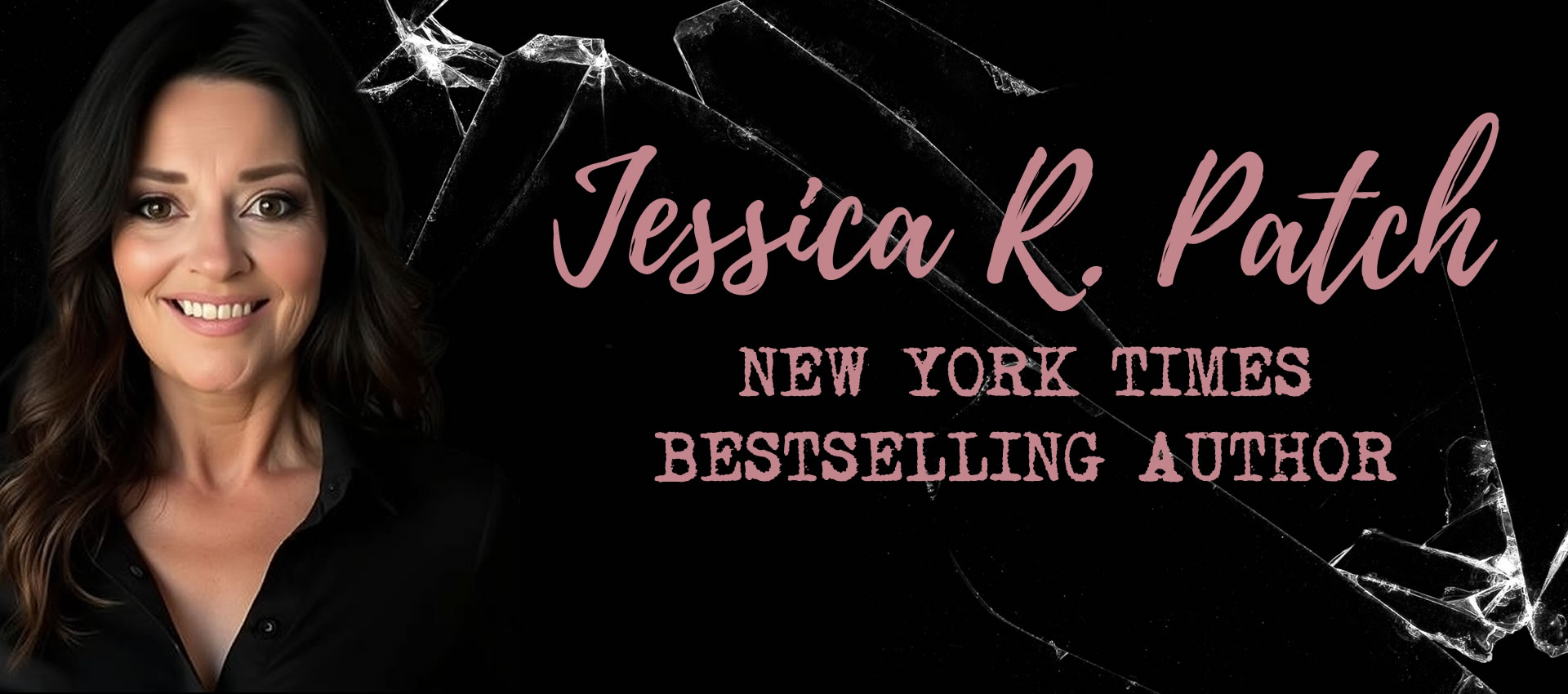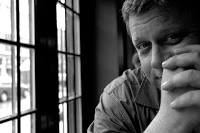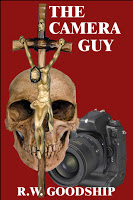“I could never be a forensic investigator, I’d toss my cookies and contaminate the crime scene.”
“That’s why we don’t eat them.”
That’s not a line from Richard Goodship’s novel, The Camera Guy. It’s a conversation we had over twitter, where I met Richard.
Richard Goodship served Queen and Country for over 26 years, the last 22 years as a Forensic Investigator. Richard’s last 5 years before retiring were spent working out of the Office of the Attorney General. Richard now, spends his time writing, having completed 3 novels, and taking pictures of living things.
I’ve always been fascinated with forensics and crime and I’m sure that’s why I write it. So when I discovered what Richard had done for a living, I had to invite him over to share a little about what he used to do. And when I have a question about evidence, I’ve got a new friend to go to. (another plug at why you should twitter)
Richard, you wrote the novel, The Camera Guy. By the way, everyone, it is not an inspy book. Tell us why you wrote it.
The Camera Guy is one of the nicknames given to those who work in the Forensic section. The book was to say the least ‘cathartic’ for me. Gave me a chance to lay some old ghosts to rest.
Intriguing. Share with us your job description, while working for Queen and Country. Love that.
During my time in Forensics I became an Arson Investigator, Bomb Tech (E.O.D.), Post Blast Tech, fingerprint examiner, firearms reconstructionist, Expert Photographer/Videographer and led several skeletal retrievals (Forensic Archeology)
Come on, people, you know that’s fascinating. Ok, pretend you’ve arrived on the crime scene. Show us how it would all go down once you started working.
>first priority upon arriving at a scene is to ensure scene has been secured
>Determine who has entered the scene and why
>Begin a photographic and video documentation of the scene prior to entering
>Determine a path into the scene that will be least damaging to possible evidence. (contamination)
>Photograph and video all evidence found at the scene prior to any handling or examinations
>Determine what is evidence and what is not. (we don’t ‘hoover’ a scene) but if in doubt, collect it
>cursory examination of a body if present. Extensive photography and video at this point..
>Determine what the scene is. Break and Enter with a Homicide, Suicide, Sexual Assault, etc…
>Label evidence and again photograph and video it prior to collection
>collect the evidence properly, ie some evidence requires paper bags, cardboard boxes, plastic evidence bags, vinyl bags etc…
>once the evidence for the scene is collected, then the body can be removed.
>photograph and video the area under the body. Examine the side of the body not visible during initial examination
>Ensure body is escorted and secured at the morgue
>Secure warrants for post mortem exam and burial from Coroner. (In Canada the Coroner relies on the expertise of the Forensic Investigator to determine if a post mortem exam is necessary. In Canada all sudden deaths are treated as a homicide until otherwise proven and will require the post mortem)
>Copious notes are to be taken during all stages of the scene and body examinations
>The Forensic Investigator will then allow the detectives onto the scene and given a ‘walk through’ and confer regarding what took place at the scene.
If you write suspense, crime mysteries, or thrillers, you should be taking notes! Richard, will we see any grizzly scenes that mirror some of your past experiences?
The Camera Guy does contain scenes that I’ve investigated. I have made some changes for moral reasons and to help fit into the story.
Let’s talk about “the perfect crime.” Is there one? Can it be done? Give us your expert opinion.
There is no such thing as ‘the perfect crime’. All Forensic Investigators live and work by the philosophy that all contact leaves a trace. When you handle something, you leave something of you behind and take with you something from the object/scene/body. Some crimes may take years to solve but only because the person doing the crime may not have a prior record or the technology isn’t available at present to detect the evidence. This last is fast becoming a thing of the past. (lets not reference CSI please)
LOL! Ok, no CSI references, that show went to pot after William Peterson left anyway. Alright, enough expertise talk, what do you do for fun?
I ride horses, spend time with my daughter and take pictures and write. Travel has always been a love of mine as well.
I love traveling as well. I can’t ride horses anymore. Scary story. Save it for another blog!
If you’d like to connect with Richard, here’s how:
@RGoodship on twitter and facebook
You can purchase his book on Amazon
Here’s a peek at The Camera Guy:
“Life was not easy for Forensic Investigator Bill Walters. His ability to see the spirits of the victims at his crime scenes gave him an edge, but it kept him isolated from his fellow Officers and gave him the reputation of being a ‘Nutbar’ on the force.
Bill could live with this. He could even live with the family of ghosts that haunted his apartment, the loss of his friends and religion and the estrangement of his daughter, Eryn.
What Bill couldn’t live with was the Demon that came to town hungry for those spirits.
Bill could live with this. He could even live with the family of ghosts that haunted his apartment, the loss of his friends and religion and the estrangement of his daughter, Eryn.
What Bill couldn’t live with was the Demon that came to town hungry for those spirits.
And his own.”
Question from Richard:
If Identical twins have identical DNA, why don’t they have identical fingerprints?
Good question. Dang! I don’t know the answer. Thanks for coming by today, Richard. It was fascinating and fun. Side note* The cover of your book creeps me out!


